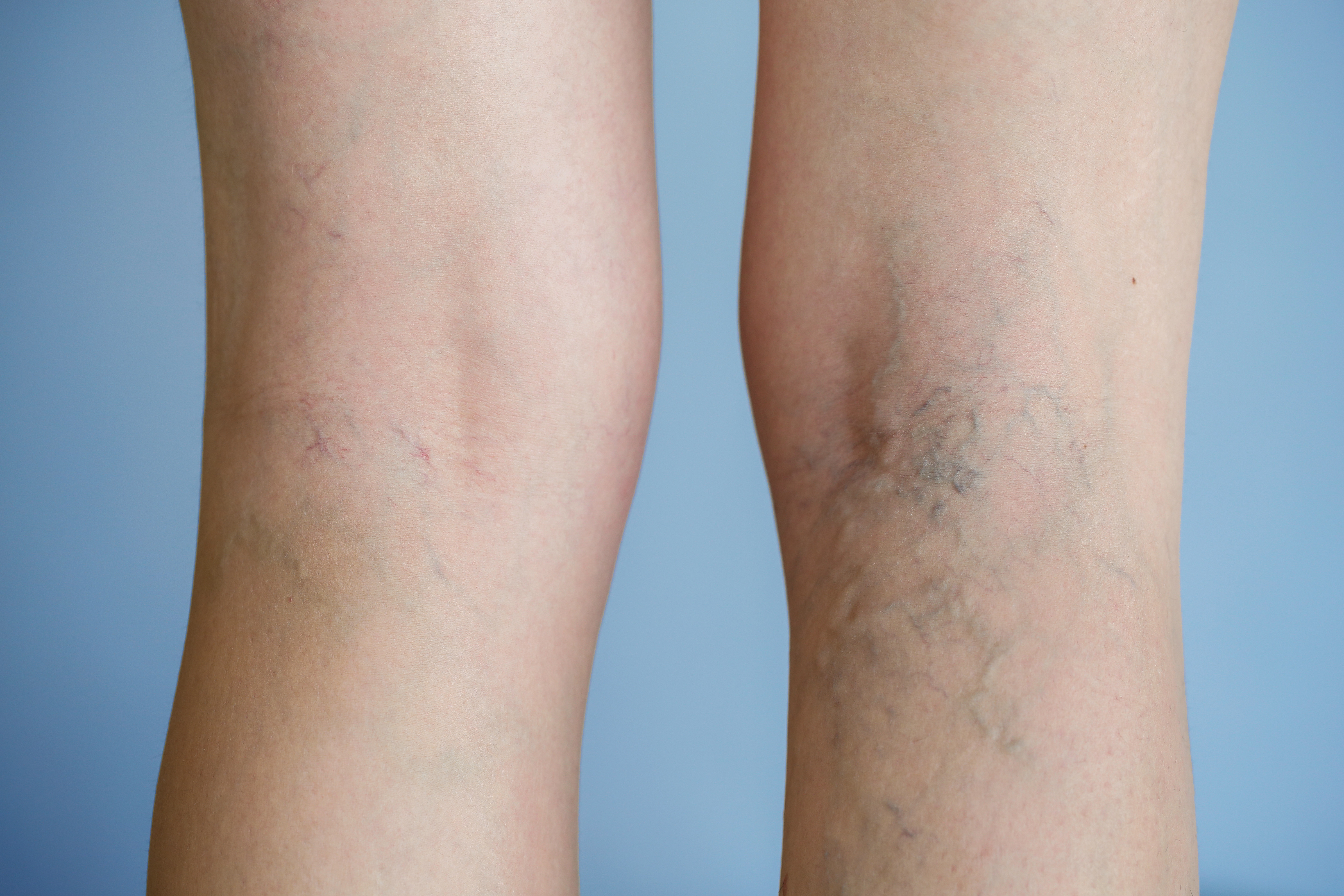Visible veins are among the commonest signs of ageing – possibly preceded only by wrinkles and greying hair. One in two women in the United States tend to develop either spider veins or varicose veins. If you’re one of them, you may be wondering how concerned you should be about them. Should your concern only extend to what you’re going to wear in summer to hide them? Or can these veins pose a serious health problem? To answer these questions, you need to know whether you have varicose veins or spider veins. This article will tell you how to differentiate between the two.
What causes spider veins and varicose veins?
The only thing that varicose veins and spider veins actually do have in common is the cause. Both conditions are caused by chronic venous insufficiency (CVS). The leg veins, which carry blood from the legs to the heart, have to work against gravity. Certain one-way doors, called valves in the veins assist with this process. Once the blood flows past them, the valves shut and prevent the blood from falling back down into the legs. If the valves become faulty, some blood can escape through and trickle back down into the legs. Over time, the excess blood puts pressure on the leg vein walls, causing the veins to expand and bulge. The excess pressure also forces the formation of tiny, new, unhealthy veins to accommodate the blood. These tiny, new veins are called spider veins, while the original bulging, bigger vein is a varicose vein.
If you are ready to get rid of your spider veins and varicose veins, skip ahead to our vein treatment cost calculator and find out if your insurance covers the treatment. Give your legs new life!

What are the differences between spider veins and varicose veins?
Spider veins alone aren’t necessarily dangerous, but they can reflect the presence of varicose veins and undiagnosed vein disease. Here’s how to distinguish between the two.
They look and feel different
Spider veins are tiny, fine lines that may be reddish, bluish or purplish in appearance. They appear in clusters that spread outwards – like a spider’s web. You can see them, but can’t feel them under the skin. Varicose veins, on the other hand, are bigger, enlarged, bulging blood vessels that you can distinctly feel with your fingers under the skin. They may have a twisted appearance, and may also be bluish in color.

They produce different kinds of symptoms
Most often, spider veins are not associated with specific vein symptoms, and merely represent a cosmetic problem. On the other hand, varicose veins often exhibit symptoms of chronic venous insufficiency. These include fatigue, aching legs, ankle and leg swelling, and cramps. Varicose veins can also cause brownish discoloration of the overlying skin, and can also cause the skin to get dry and itchy.
Treatment options differ
At the end of the day, this is the most significant difference. Treatment for CVS depends on whether or not you have symptoms, and how severe these symptoms are. Since spider veins are not usually associated with symptoms, treatment is usually cosmetic in nature. This includes:
- Sclerotherapy: Your spider veins are identified, and a small amount of medicated solution is injected into them. This causes the vein walls to stick together, scar and seal off, which stops blood flowing through them. Once this happens, the defunct vein gets absorbed naturally by the body.
- Varithena: Similar to sclerotherapy, the spider vein doctor injects medicated foam into your veins. This is generally employed for larger spider veins.
- Laser ablation: This is done mostly for cosmetic reasons. Laser energy is applied to the surface of the skin over the spider veins, and the heat from this destroys the veins. Our vein doctors in NY perform laser treatment when the veins are too small for sclerotherapy, or after sclerotherapy to treat residual veins.
Varicose veins, however, need more extensive treatment. Left untreated, symptomatic varicose veins can develop complications such as skin ulcers. Severe varicose veins can even rupture, causing bleeding. Varicose vein treatment involves removing the leaky main vein that has a faulty valve. This may sound scary, but you don’t need to worry! Vein clinics in NY and NJ have developed comfortable, convenient treatment options to deal with varicose veins, including the following:
- Radiofrequency ablation: The vein doctor numbs the skin over the varicose vein. A radiofrequency catheter is then inserted into the main vein. The heat generated by the catheter destroys the vein from within.
- Endovenous laser ablation: This procedure is the same as radiofrequency ablation, except that a laser fiber is inserted into the vein instead of a radiofrequency catheter.
- Venaseal: The varicose vein doctor injects small amounts of medical grade glue into your vein. This causes the vein to seal off and eventually get absorbed by the body.
- Clarivein: This cutting edge treatment involves implanting a tiny device into the affected vein. This destroys the vein from within by dispersing sclerosing solution into the entire vein.
With state of the art technology available for treatment procedures, our varicose vein treatment clinics offer all the above treatment options. These minimally invasive procedures need very little down time – you can get it done during a lunch break and return to work!
If you’re still confused about how severe your varicose veins or spider veins are, or the best vein treatment for you, you should consult with a vein specialist. Our vein doctors use advanced technology to determine the extent of CVS associated with your varicose or spider veins, and will develop a treatment plan based on your specific needs. Give your legs new life today!








